Home mortgage interest deduction
description: a tax deduction for homeowners based on the interest paid on a home mortgage
77 results

Triumph of the City: How Our Greatest Invention Makes Us Richer, Smarter, Greener, Healthier, and Happier
by
Edward L. Glaeser
Published 1 Jan 2011
An antiurban bias is even more obvious in housing and transportation policy, which seems almost intentionally designed to hurt the cities that enrich their countries and the entire world. The centerpiece of federal housing policy is the home mortgage interest deduction, which allows home owners to deduct from their taxes the interest on up to a million dollars of mortgage debt. Because more than 60 percent of Americans are home owners, this policy has become politically inviolate, but it is deeply flawed. The home mortgage interest deduction is a sacred cow in need of a good stockyard. It encourages Americans to leverage themselves to the hilt to bet on housing, which looks particularly foolish in the wake of the great housing bust of 2006-2008.
…
Environmental concerns should push toward a tax policy that encourages thrifty living in modest residences. The home mortgage interest deduction pushes us in the opposite direction, encouraging people to buy bigger homes, which are often suburban. The post-World War II move to enclaves like Levittown and The Woodlands was fueled by pro-home-ownership tax policies. I’m happy for people to enjoy the pleasures of large houses on large lots, but there is little reason why federal tax policy should subsidize those who buy big. A simple way to ease this problem without harming middle-class Americans would be lowering the upper limit on the home mortgage interest deduction to some more modest figure, like $300,000.
…
The government’s job is to allow people to choose the life they want, as long as they are paying for the costs of that lifestyle. Yet today, public policies strongly encourage people, including me, to sprawl. I doubt that I would be in the suburbs if it weren’t for the antiurban public policy trifecta of the Massachusetts Turnpike, the home mortgage interest deduction, and the problems of urban schools. Eliminating pro-sprawl policies won’t bring back every declining city, and it won’t kill the suburbs, but it will create a healthier urban system whereby walking cities can compete more effectively against the car. The stakes are even higher in the developing world, where cities are more fluid and where a wholesale move to American-style sprawl would mean a massive rise in driving and energy use.
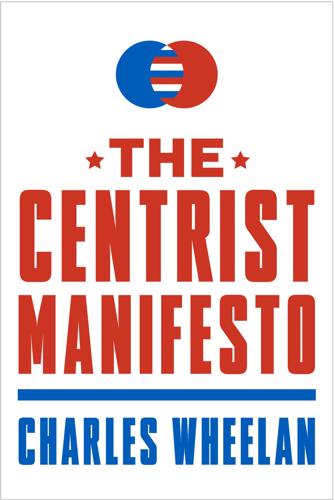
The Centrist Manifesto
by
Charles Wheelan
Published 18 Apr 2013
The sensible Simpson-Bowles recommendations had no meaningful support from either party. The plan landed in Washington like a dead fish. Here is the tragedy: a majority of Americans supported the sensible recommendations of the Simpson-Bowles commission. Even with the tough love—a higher gas tax, a higher retirement age for Social Security, a reduction in the home mortgage-interest deduction, and other real sacrifices—American voters were willing to compromise in a way that their representatives were not. A Gallup poll taken shortly after the Simpson-Bowles recommendations were released found that 60 percent of Americans were willing to support a deficit reduction compromise even if it was a plan that they “personally disagreed with.”32 In other words, our current political system failed to confront our enormous fiscal challenges, not because of what voters wanted, but despite it.
…
Some of our most expensive government programs lavish benefits on the middle class, and even on those who are extremely wealthy. That has to change. The affluent should pay more for health care under Medicare and be taxed fully on their Social Security benefits. We must cap or phase out popular but expensive government giveaways that have little or no social value, like the home mortgage-interest deduction. The fact that Bill Gates and Warren Buffett are eligible for a government housing subsidy is indefensible. That is how we achieve smaller, smarter government. Restore fiscal sanity. We cannot continue to borrow massively from the rest of the world. Our mounting debt is unfair to future generations, leaves the nation dangerously beholden to foreign creditors, and puts the financial system at risk.
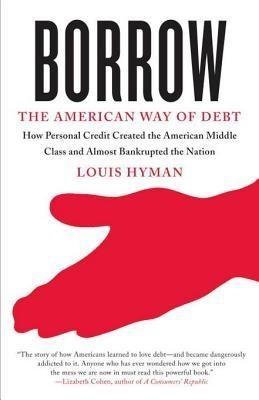
Borrow: The American Way of Debt
by
Louis Hyman
Published 24 Jan 2012
Only when the income tax began to encompass everyone after World War II did the interest deductions begin to affect taxes—and for the postwar home owner, they were fantastic. All the interest paid could be deducted. What incentive, then, was there not to borrow? Only those who took the standard deduction—that is, most renters—lost out. For home owners who took the mortgage interest deduction, the deduction effectively cut the cost of their borrowing by a third or a half. Interest on top of that was also subsidized. Borrowing wasn’t saving, but it was not nearly as pernicious as it would have been in the absence of the deduction. Unsurprisingly, between tax incentives and rising incomes, the middle class borrowed far more frequently than either the poor or the rich.
…
The reasoned economic argument mattered little to Reagan, who knew that eliminating the deduction would lead to a revolt by home-owning Americans, as well as the real estate industry. While the wonks debated, Reagan gave a speech in May 1984 to the National Association of Realtors, reassuring them that “in case there’s still any doubt, I want you to know we will preserve the part of the American Dream which the home-mortgage-interest deduction symbolizes.”3 Mortgage debt had long been thought of as “good” debt, which was why it was protected during the tax reform. Since the 1930s, when the FHA had made good housing a national project, Americans had been encouraged to take out long-term mortgages and buy a house. Owing a mortgage was not just a financial choice, it was a sign of adulthood and the imprimatur of middle-class success.
…
Owing a mortgage was not just a financial choice, it was a sign of adulthood and the imprimatur of middle-class success. While a mortgage signified maturity, credit cards signified fun. In the middle of the debates stood a few sacred cows: lower tax rates, steady government revenues, and the home mortgage interest deduction. While the deduction for mortgage interest had been tabled, however, all the other distortionary deductions, such as the interest on cars, credit cards, and all other consumer purchases, were still up for debate. The American Dream of home ownership proved to be one of the most resilient obstacles to Reagan’s conservative agenda.

J.K. Lasser's Your Income Tax 2014
by
J. K. Lasser
Published 5 Oct 2013
Some of the expenses will not be currently deductible. The allocable rental expenses are deducted from rental income in a specific order: Step 1. The rental portion of the following expenses is fully deductible on Schedule E of Form 1040, even if the total exceeds rental income: deductible home mortgage interest (15.1), real estate taxes (16.4), deductible casualty and theft losses (Chapter 18), and directly related rental expenses. Directly related rental expenses are rental expenses not related to the use or maintenance of the residence itself, such as office supplies, rental agency fees, advertising, and depreciation on office equipment used in the rental activity.
…
- - - - - - - - - - Planning Reminder Rental of Personal Residence Renting a personal residence is not treated as a passive rental activity if you personally use the home for more than the greater of (1) 14 days or (2) 10% of the days the home is rented for a fair market rental amount (9.7). On Schedule E, you may claim a full deduction for the rental portion of real estate taxes and mortgage interest, assuming the home is a principal residence or qualifying second home under the mortgage interest rules (15.1). See 9.9 for limitations on deductions of other rental expenses. - - - - - - - - - - 10.2 Rental Real Estate Loss Allowance of up to $25,000 If you are not a real estate professional (10.3) but you actively participate by performing some management role in a real estate rental venture, you may deduct up to $25,000 of a real estate rental loss against your regular, nonpassive income such as wages.
…
Interest expenses If you itemize, you may deduct interest on qualified home mortgages, points, home equity loans, and interest on loans to carry investments. Interest on investment loans is deductible only to the extent of net investment income (15.10). Interest on personal and consumer loans is not deductible. Interest on home mortgages is deductible if certain tests are met (15.1). Deductions for home mortgage interest and points are included in the reduction to overall itemized deductions (13.7) explained above. See Chapter 15 for details on interest deductions. Taxes If you itemize, you can deduct real estate taxes and state and local income taxes, or you may be able to elect to deduct general sales taxes in lieu of the income taxes (16.3).
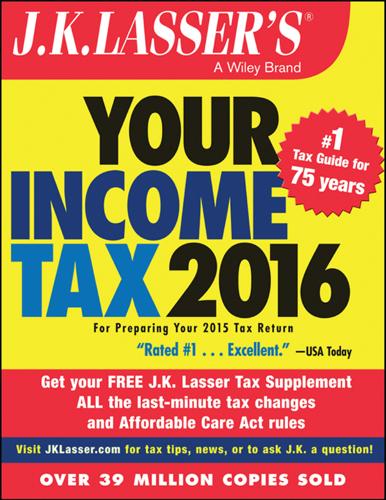
J.K. Lasser's Your Income Tax 2016: For Preparing Your 2015 Tax Return
by
J. K. Lasser Institute
Published 19 Oct 2015
Some of the expenses will not be currently deductible. The allocable rental expenses are deducted from rental income in a specific order: Step 1. The rental portion of the following expenses is fully deductible on Schedule E of Form 1040, even if the total exceeds rental income: deductible home mortgage interest (15.1), real estate taxes (16.4), deductible casualty and theft losses (Chapter 18), and directly related rental expenses. Directly related rental expenses are rental expenses not related to the use or maintenance of the residence itself, such as office supplies, rental agency fees, advertising, and depreciation on office equipment used in the rental activity.
…
Planning Reminder Rental of Personal Residence Renting a personal residence is not treated as a passive rental activity if you personally use the home for more than the greater of (1) 14 days or (2) 10% of the days the home is rented for a fair market rental amount (9.7). On Schedule E, you may claim a full deduction for the rental portion of real estate taxes and mortgage interest, assuming the home is a principal residence or qualifying second home under the mortgage interest rules (15.1). See 9.9 for limitations on deductions of other rental expenses. 10.2 Rental Real Estate Loss Allowance of up to $25,000 If you are not a real estate professional (10.3) but you actively participate by performing some management role in a real estate rental venture, you may deduct up to $25,000 of a real estate rental loss against your regular, nonpassive income such as wages.
…
Interest expenses If you itemize, you may deduct interest on qualified home mortgages, points, home equity loans, and interest on loans to carry investments. Interest on investment loans is deductible only to the extent of net investment income (15.10). Interest on personal and consumer loans is not deductible. Interest on home mortgages is deductible if certain tests are met (15.1). Deductions for home mortgage interest and points are included in the reduction to overall itemized deductions (13.7) explained above. See Chapter 15 for details on interest deductions. Taxes If you itemize, you can deduct real estate taxes and state and local income taxes, or you may be able to elect to deduct general sales taxes in lieu of the income taxes(16.3).
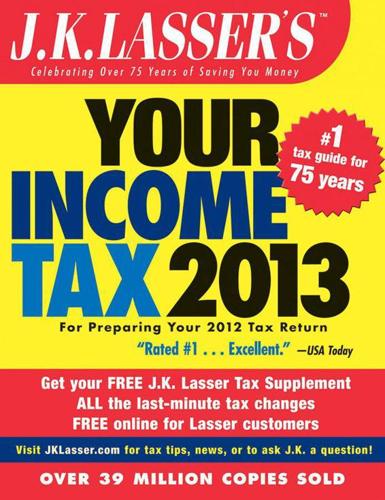
J.K. Lasser's Your Income Tax
by
J K Lasser Institute
Published 30 Oct 2012
Some of the expenses will not be currently deductible. The allocable rental expenses are deducted from rental income in a specific order: Step 1. The rental portion of the following expenses is fully deductible on Schedule E of Form 1040, even if the total exceeds rental income: deductible home mortgage interest (15.1), real estate taxes (16.4), deductible casualty and theft losses (Chapter 18), and directly related rental expenses. Directly related rental expenses are rental expenses not related to the use or maintenance of the residence itself, such as office supplies, rental agency fees, advertising, and depreciation on office equipment used in the rental activity.
…
- - - - - - - - - - Planning Reminder Rental of Personal Residence Renting a personal residence is not treated as a passive rental activity if you personally use the home for more than the greater of (1) 14 days or (2) 10% of the days the home is rented for a fair market rental amount (9.7). On Schedule E, you may claim a full deduction for the rental portion of real estate taxes and mortgage interest, assuming the home is a principal residence or qualifying second home under the mortgage interest rules (15.1). See 9.9 for limitations on deductions of other rental expenses. - - - - - - - - - - 10.2 Rental Real Estate Loss Allowance of up to $25,000 If you are not a real estate professional (10.3) but you actively participate by performing some management role in a real estate rental venture, you may deduct up to $25,000 of a real estate rental loss against your regular, nonpassive income such as wages.
…
However, interest on a loan secured by a first or second home may be deductible as home equity mortgage interest regardless of the way you use the loan. Interest on a loan used to finance an investment in a passive activity is subject to the limitations discussed in Chapter 10. However, if you rent out a second home that qualifies as a second residence, the portion of mortgage interest allocable to rental use is deductible as qualified mortgage interest and is not treated as a passive activity expense. 15.1 Home Mortgage Interest 15.2 Home Acquisition Loans 15.3 Home Equity Loans 15.4 Home Construction Loans 15.5 Home Improvement Loans 15.6 Mortgage Insurance Premiums and Other Payment Rules 15.7 Interest on Refinanced Loans 15.8 “Points” 15.9 Cooperative and Condominium Apartments 15.10 Investment Interest Limitations 15.11 Debts To Carry Tax-Exempt Obligations 15.12 Earmarking Use of Loan Proceeds For Investment or Business 15.13 Year To Claim an Interest Deduction 15.14 Prepaid Interest 15.1 Home Mortgage Interest You generally may deduct on Schedule A (Form 1040) qualifying mortgage interest on up to two residences (see two-residence limit, below).

Walk Away
by
Douglas E. French
Published 1 Mar 2011
With the American public becoming addicted to credit in the 1970’s and the Treasury looking for more tax money, the deductibility of consumer interest payments, including mortgage interest, became a target of the Congress. Whether it would really make a difference for home values or not, President Reagan wasn’t going to mess with the mortgage interest deduction, telling the National Association of Realtors in 1984, “I want you to know that we will preserve the part of the American dream which the home-mortgage-interest deduction symbolizes.” Two years later, Congress ended the deductibility of interest on credit-card and other consumer loans in the tax-reform act of 1986, but left the mortgage deduction in place.
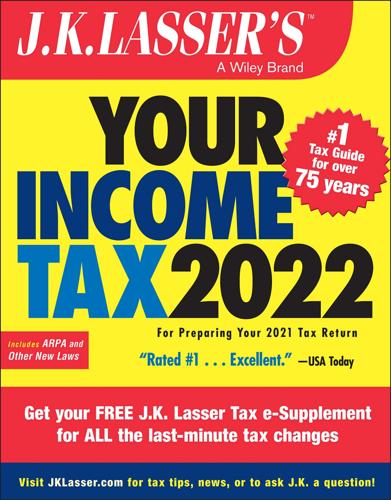
J.K. Lasser's Your Income Tax 2022: For Preparing Your 2021 Tax Return
by
J. K. Lasser Institute
Published 21 Dec 2021
Some of the expenses will not be currently deductible. The allocable rental expenses are deducted from rental income in a specific order: The rental portion of the following expenses is fully deductible on Schedule E of Form 1040 or 1040-SR, even if the total exceeds rental income: deductible home mortgage interest (15.1), real estate taxes (16.4), deductible casualty and theft losses (Chapter 18), and directly related rental expenses. Directly related rental expenses are rental expenses not related to the use or maintenance of the residence itself, such as office supplies, rental agency fees, advertising, and depreciation on office equipment used in the rental activity.
…
Because the Tax Cuts and Jobs Act has reduced or eliminated various itemized deductions, the number of taxpayers who claim the standard deduction has greatly increased. Nevertheless, depending on your individual circumstances, your allowable itemized deductions for medical/dental expenses, state and local taxes, home mortgage interest, charitable contributions, casualty and theft losses from federally declared disasters and certain miscellaneous expenses may exceed your standard deduction, in which case you can claim those itemized deductions on Schedule A of Form 1040 or 1040-SR. Note that for 2021, a limited chariable contribution deduction is allowed if you claim the standard deduction; see the nearby Law Alert and 13.2.
…
However, interest on a loan secured by a first or second home may be deductible as home equity mortgage interest regardless of the way you use the loan. Interest on a loan used to finance an investment in a passive activity is subject to the limitations discussed in Chapter 10. However, if you rent out a second home that qualifies as a second residence, the portion of mortgage interest allocable to rental use is deductible as qualified mortgage interest and is not treated as a passive activity expense. 15.1 Deduction for Home Mortgage Interest 15.2 Home Acquisition Loans 15.3 Home Equity Loans 15.4 Home Construction Loans 15.5 Mortgage Insurance Premiums and Other Payment Rules 15.6 Interest on Refinanced Loans 15.7 “Points” 15.8 Cooperative and Condominium Apartments 15.9 Investment Interest Limitations 15.10 Debts To Carry Tax-Exempt Obligations 15.11 Earmarking Use of Loan Proceeds For Investment or Business 15.12 Year To Claim an Interest Deduction 15.13 Prepaid Interest 15.1 Deduction for Home Mortgage Interest If you itemize deductions, you generally may deduct on Schedule A (Form 1040 or 1040-SR) interest on home acquisition debt that is secured by a first or second home (see two-residence limit, below).
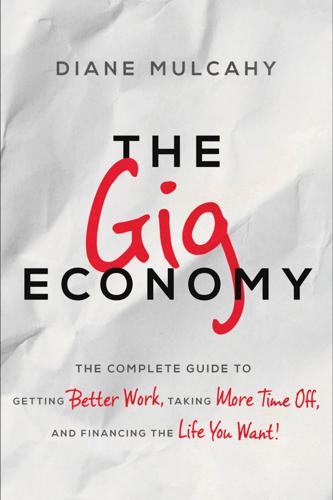
The Gig Economy: The Complete Guide to Getting Better Work, Taking More Time Off, and Financing the Life You Want
by
Diane Mulcahy
Published 8 Nov 2016
The answer is partly due to the persistent narrative about the financial benefits of home ownership. Many Americans accept the premise of home ownership as the foundation of the American Dream and default to that option without carefully considering the financial risks or evaluating other options. The U.S. government has gone to great lengths at great cost to encourage home ownership through the mortgage interest deduction, interest deductions on home equity lines of credit, and favorable capital gains tax treatment of the sale of a primary residence. The American Dream narrative and these government policies rely on the unquestioning acceptance of the three common myths of home ownership. MYTH #1: My home will appreciate in value.
…
Wolff, Edward N., “Household Wealth Trends in the United States, 1962–2013: What Happened over the Great Recession?” NBER, The National Bureau of Economic Research, December 2014. www.nber.org/papers/w20733 7. Urban-Brookings Tax Policy Center, “Statistics: Type of Deduction 1999–2013,” December 15, 2015. www.taxpolicycenter.org/statistics/type-deduction 8. Toder, Eric J., “Options to Reform the Home Mortgage Interest Deduction,” Tax Policy Center, Urban-Brookings Tax Policy Center, April 25, 2013. www.taxpolicycenter.org/publications/options-reform-deduction-home-mortgage-interest-0/full See also, Testimony Before the Committee on Ways and Means, United States House of Representatives, Hearing on Tax Reform and Real Estate, April 25, 2013. waysandmeans.house.gov/UploadedFiles/Toder_Testimony_42513_fc.pdf 9.

The Great Reset: How the Post-Crash Economy Will Change the Way We Live and Work
by
Richard Florida
Published 22 Apr 2010
“In the current morass, everything should, once again, be open for debate. One sacred cow that has long been in need of a good stockyard is the home mortgage interest deduction.”18 The deduction promotes inefficient use of scarce economic resources. On top of that, the bulk of the benefits go to fairly rich households, “people who are overwhelmingly in single-family detached houses,” notes Glaeser, who “would be likely to own that house with or without the home mortgage interest rate deduction.” He’s describing me, for instance; I own a single-family home in Canada, where no such deduction exists. He suggests “gradually reducing the upper limit” on the deduction to loans of up to $300,000.
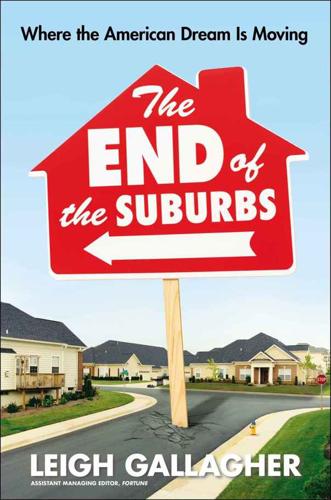
The End of the Suburbs: Where the American Dream Is Moving
by
Leigh Gallagher
Published 26 Jun 2013
But with the new government backing, private lenders were suddenly willing to lend on much more generous terms, extending the length of the loan to twenty and then thirty years and ultimately lending more than 90 percent of the cost of the home to buyers. The modern-day long-term fixed-rate mortgage was born, making it possible for almost anyone to get a home loan. The mortgage interest tax deduction, a by-product of the 1913 law that established the federal income tax—and still one of the biggest incentives for home ownership to this day—provided a welcome assist. Then in 1944, the government passed the Servicemen’s Readjustment Act, otherwise known as the GI Bill, which provided low-interest, zero-down-payment loans to millions of veterans.
…
” • • • For all the ideals of freedom our country was built on, our modern residential pattern of suburban development—and the notion that it provided a better way to live—was decidedly master-planned. It started with the federal policies that laid the groundwork for suburbia, the post-Depression inventions explored in the previous chapter that suddenly made home ownership affordable for the middle class. The mortgage interest tax deduction, which wasn’t even intended for mortgages but was an indirect product of the 1913 act that established the federal income tax, today provides nearly $400 billion in subsidies to home owners each year, propping up the market for single-family homes to the detriment of renters, who get no such help.
…
“I love this street,” he says. “This place totally rocks, doesn’t it?” He then shows a picture of Brainerd today, a strip mall surrounded by parking lots, to show the difference. The 1894 version, he implores the audience, is what we need to go back to. “We built this before the interstate highway act, before the home mortgage interest deduction . . . before zoning, before the thirty-year mortgage,” he says. “We built places that rocked back when we had to build them to be financially sound.” Marohn has not been immune from the pain of the housing crisis. His house, which he and his wife had built in 1995 and refinanced a few times, has lost value; it was assessed at $272,000 a few years ago and he thinks it would sell today for $200,000.
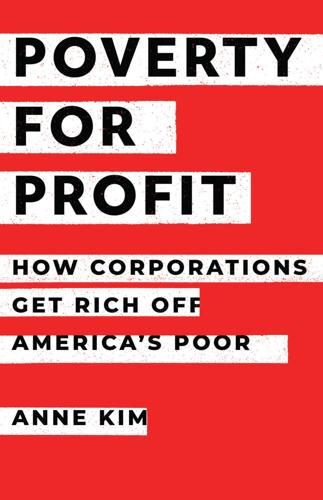
Poverty for Profit
by
Anne Kim
Government Accountability Office to Honorable John Lewis, Subcommittee on Oversight, Committee on Ways and Means, U.S. House of Representatives, “Subject: Refund Anticipation Loans,” June 5, 2008. 21. In truth, much of U.S. domestic policy is now delivered through the tax code. The most obvious examples are subsidies for the middle class, which are disguised as tax breaks. These include the home mortgage interest deduction but also tax preferences for retirement accounts, 529 accounts for college savings, and so on. Tax breaks are politically much more palatable for Congress to pass than direct subsidies or the creation of a new program. In addition, the “cost” of tax benefits—tax “expenditures”—can be framed as lost revenue versus “government spending.” 22.
…
See also dialysis industry; Medicaid dentistry; Medicaid managed-care industry Health Net of California, 129 Health People 2030 project, 210 Health Policy Institute (HPI), American Dental Association’s, 108, 109 Health Policy Institute at Georgetown University, 121–22, 124 Heritage Foundation, 39 Hevesi, Alan, 55 Hewitt, John, 14–16, 243–44n39 HFS Inc., 15 Hispanic Americans: children, 5, 107, 127; dental health disparities, 107; food deserts and limited supermarket access, 210; health disparities, 107, 127, 139, 210; infant care under Medicaid managed care, 127; kidney-failure patients, 139; poverty rates, 5; pretrial detention statistics, 161; youth unemployment during coronavirus pandemic, 82 HMOs (health maintenance organizations), 123 home detention companies, 153, 163–71; and the coronavirus pandemic, 165–66; defendants’ fees for, 165, 166–67, 185; discretion to set conditions of house arrest, 167–69; electronic monitoring (“e-carceration”), 163, 165–70, 175–76, 177, 185; and immigrant detainees, 177; “pre-approval” letters for bail review hearings, 164–65, 170–71; and “24/7 lockdown” (surveillance), 168 Home Dialyzors United, 142 homeless individuals: affordable housing shortages, 191, 192; and Job Corps, 85, 87–88, 89; shelters, 4; and tax prep firms, 21 home mortgage interest deduction, 13, 242n21 Homestead Job Corps Center (Florida), 90–91 HomeWAV, 179 H1-B Grader, 112–13 H1-B (or O-1) visas, 112–13 Hospital Corporation of America, 173 House Ways and Means Committee, 140 housing. See Housing Choice Voucher Program; Low Income Housing Tax Credit (LIHTC); rental assistance programs Housing Act of 1937 (Section 8 of), 193 Housing Choice Voucher Program, 3, 39–40, 190, 191–200, 230, 314n17; antidiscrimination ordinances, 197–98; creation during Nixon administration, 193–94; and Moving to Opportunity (MTO) project, 195–96; and “neighborhood effects,” 195–96, 314–15n27; Reagan and, 39–40; and Section 8 landlords, 190, 196–200, 230; tenant-based and “project based,” 314n17; waitlists and shortages of affordable housing, 191–93, 195, 230 H&R Block, 3, 12, 14, 22, 24, 28, 30–31 IBISWorld, 12, 159 iCompete (podcast), 14–15 Illinois: bail reform, 162; home detention and electronic monitoring, 165, 167–69, 170; housing voucher tenants and poor neighborhoods, 196; job training programs, 67, 86–87; Medicaid reimbursements for nursing homes, 48; prison commissary sales, 180; public housing of the 1970s, 194 immigrants: detainees in privately-run ICE detention facilities, 176; home detention and electronic monitoring, 177; Medicaid dentists sponsoring visas, 112–13, 117; and tax-prep industry, 20; Immigration and Customs Enforcement (ICE), 176 “Individual Training Accounts,” 64, 76, 77.

The Survival of the City: Human Flourishing in an Age of Isolation
by
Edward Glaeser
and
David Cutler
Published 14 Sep 2021
The federal highway subsidy has actually increased over time, because the gas tax that funds the Highway Trust Fund has been fixed at 18.4 cents per gallon since 1993. As inflation has eroded that tax’s real value, Washington has used general tax revenues to fund roads, which effectively subsidizes driving and energy use. The home mortgage interest deduction was originally part of the tax code because all interest that households paid was deductible. The Tax Reform Act of 1986 eliminated the more general interest deduction, but the favoritism shown to homeowners remained. After World War II, the federal government expanded its support for home buying with Veterans Administration loans for returning soldiers.
…
See also influenza pandemic (1918–19) Sprung-Keyser, Benjamin, 331 Stalin, Joseph, 325 Stanton, Christopher, 231 Stergios, James, 306 Stigler, George, 178–79 “stop and frisk” policies, 288–91 Strong, William Lafayette, 84–85 student debt, canceling, 16 Sturgis Motorcycle Rally, 44 sub-Saharan Africa, 79 suburbs, 7–8, 215, 219, 268–69, 270 Sugar Research Foundation, 125 suicides, 98, 123, 204, 319 super-spreader events, 87 Sweden, 197, 302 Swift, Gustavus, 182 Switzerland, 134 Sy, Elhadj As, 323 Sydenham, Thomas, 118 Tabarrok, Alex, 282 Taiwan, 132, 149, 156, 165, 166 Tammany Hall, 73, 82, 268 Tan, Brandon, 300 taxes and taxation as centrifugal/dispersing force, 218 and corporate relocations, 209 and declines in tax base, 7 and funding of public services, 8 and home mortgage interest deductions, 216 impact of pandemic on revenues from, 6 tax subsidies for working poor, 16 of unhealthy products, 100, 128 teachers unions, 308, 311–12, 313–15, 316 Tebes, John, 290 telemedicine, 146 tenements, disease-infested, 81–83 terrorism car bomb in Times Square, 287–88 September 11, 2001, terrorist attacks, 6, 243 testing for COVID-19 of asymptomatic populations, 18, 149, 164, 167, 198 countries with notable success in, 156 in Germany, 156, 167 governments’ responsibility for, 154–55 in New Zealand, 18, 156, 164–65 in the United States, 149, 150, 167 WHO’s test for, 150 Texas, 18–19, 214 Thatcher, Margaret, 224 The Third Wave (Toffler), 219–20 “three strikes” laws, 14, 277, 281, 282–85, 286 Thucydides, 25, 29–30, 34, 36, 46 Tito, Josip Broz, 54 Tocqueville, Alexis de, 14–15, 72 Toffler, Alvin, 22, 207, 219–23, 224–25, 226, 227, 229, 238 trade, 28, 32, 40, 42 transportation, 7, 210, 212–14, 215, 216–17 travel restrictions ability to quickly implement, 55 and cordon sanitaire at national borders, 53 and COVID-19 pandemic, 50, 54, 55, 149, 150 failures in, 50 of New Zealand, 163 Ragusa’s application of, 41–42 screening international travelers, 55 and yellow fever in Philadelphia, 47 Troesken, Werner, 78 Truman, Harry, 137–38, 140, 145 Trump, Donald, 132, 151, 152 Trump administration, 149–50, 168 tuberculosis, 175 Turner, Frederick Jackson, 268 “Typhoid Mary,” 38 unemployment/joblessness due to COVID-19, 2, 169, 196, 197, 228, 229, 233 and housing costs, 272 long-term, 272 and universal basic income, 204 United Kingdom commitment to urban sanitation in, 77 food consumption trends in, 108–9 health care spending in, 134, 142–43 manufacturing in, 189, 190 National Health Service of, 139–40 place-based health differences in, 103 rural population in, 221 service industry in, 2, 190 sewer system investment of, 76–77 vaccine preorders, 144 vaccine rollout, 77, 145 United Nations (UN), 57, 92, 325 universal basic income, 204 University of the Chinese Academy of Sciences, 91 upward mobility, 3, 16, 244, 257–58, 276 Urban Fortunes (Molotch and Logan), 267 urbanization, rate of, 173, 221 USA Today, 310–11 U.S.
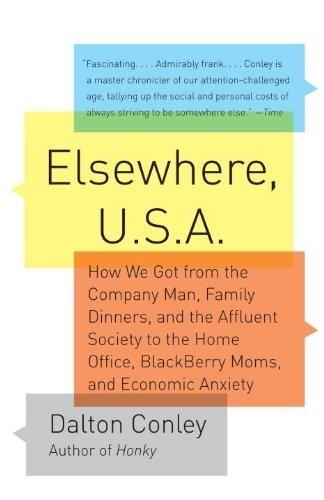
Elsewhere, U.S.A: How We Got From the Company Man, Family Dinners, and the Affluent Society to the Home Office, BlackBerry Moms,and Economic Anxiety
by
Dalton Conley
Published 27 Dec 2008
The median size of new homes has increased to 2,500 square feet today, up by almost 50 percent since 1976. Likewise, the proportion of new homes with four or more bedrooms has doubled and the number with three or more bathrooms has tripled in just the last twenty years. These figures, and the debt burden that drives them, make the home mortgage interest deduction the most sacrosanct federal policy after social security17 As a result, cheap and easy credit has been a major reason why the United States recently dipped into negative savings for the first time since the Great Depression.18And though manufacturing of machinery and other durable goods has pretty much flown the coop (that’s the coop, not the co-op), new homes and renovations are about the only thing left that we actually physically construct ourselves.

Just Giving: Why Philanthropy Is Failing Democracy and How It Can Do Better
by
Rob Reich
Published 20 Nov 2018
On the ubiquity and scope of their use in official state policy, see Mettler, Submerged State, and Christopher Howard, The Hidden Welfare State: Tax Expenditures and Social Policy in the United States (Princeton, NJ: Princeton University Press, 1997). Howard examines nearly all the major tax expenditures, the home mortgage interest deduction, employer pensions, the earned income tax credit, and targeted jobs tax credits, and his book is framed as an examination of the hidden welfare state, but he curiously provides no discussion of the charitable contributions deduction, one of the costliest of all tax expenditures. 23.
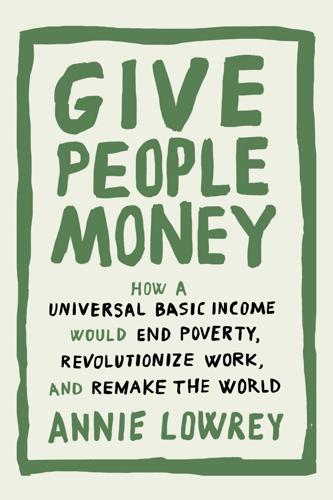
Give People Money
by
Annie Lowrey
Published 10 Jul 2018
“And I couldn’t take all thirty first steps.” But providing the poor with those steps might mean seeing them as deserving for no other reason than their poverty—something that is not and has never been part of this country’s social contract. We believe that there is a moral difference between taking a home mortgage interest deduction and receiving a Section 8 voucher. We judge, marginalize, and shame the poor for their poverty—to the point that we make them provide urine samples, and want to force them to volunteer for health benefits. As such, we tolerate levels of poverty that are grotesque and entirely unique among developed nations.
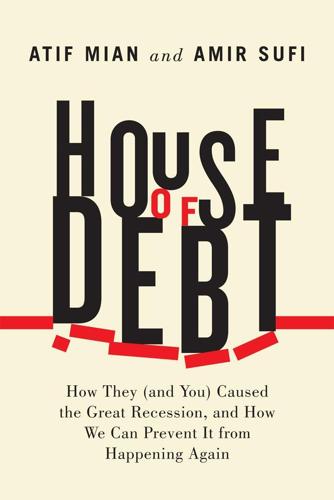
House of Debt: How They (And You) Caused the Great Recession, and How We Can Prevent It From Happening Again
by
Atif Mian
and
Amir Sufi
Published 11 May 2014
But, as David Miles shows through a series of calculations, the Great Recession in the United Kingdom would have been far less severe had they been in place. The program has proved immensely popular with very high volume of equity loan issuance, which shows how government choices dictate what financial contracts prevail in the marketplace.18 Tax policy is another factor that limits innovation in the mortgage industry. The home-owner mortgage-interest deduction encourages home owners to borrow using traditional mortgage contracts. The SRM contract—because of its risk-sharing qualities—would likely not qualify as a “debt instrument” and would therefore not have the same preferential tax treatment as standard mortgages. In fact, the IRS only gives the deduction if the party obtaining the financing—a home owner or shareholders of a corporation—is “subordinate to the rights of general creditors.”19 To get the tax advantage, a home owner must bear the first losses when house prices fall.
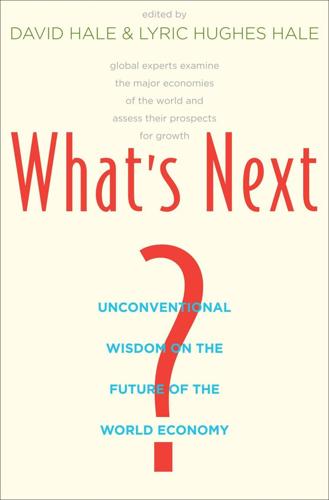
What's Next?: Unconventional Wisdom on the Future of the World Economy
by
David Hale
and
Lyric Hughes Hale
Published 23 May 2011
Thus, unlike in many jurisdictions in the United States, where the borrower can simply “mail the key to the bank and walk away,” if, for example, the value of the property falls below the mortgage principal, Canadian borrowers can have other assets and even future earnings attached by the lender. Home mortgage interest is not tax deductable in Canada either (but capital gains on a home are also not subject to tax). Full recourse mortgages and no mortgage interest tax deductibility significantly reduce the incentive to take out excessively large mortgages. Indeed, there is an incentive to accelerate mortgage repayment.
…
See also climate change Green Movement, 209–211 Greenwood, John, xxiv gross domestic product (GDP): country comparison, 30, 64; Latin America, 50–51; Mexico, 30, 36 H1N1 flu, 29 Hale, David, 3 Harper, Stephen, 13, 16 Hatoyama, Ichiro, 105 Hatoyama, Yukio, 103, 105 health care expenditures, 258, 260 herd instinct, 288–289 heuristics, 287, 289 Heyman, Timothy, xviii, xix, 29 Hezbollah, 212–213 Highly Indebted Poor Countries (HIPC), 121 HIH Insurance, 142 Hinton, Les, 300 home mortgage interest deduction, 17, 144 Hong Kong, 164 housing sector: Australia, 143–145; Canada, 19–20; US, 9 HST, 20 Hungary, 262 hydrocarbons, 181–183 income taxes, 6, 260–262 India, 204, 257 Indonesia, 7–8 industrial policy: Japan, 106–107; South Africa, 130–131 industrial production, country comparison, 65 infant industries, 106–107 inflation, 51, 82, 95, 166, 256 information: diminishing returns of, 292–301; freedom of, 295; processing of, 292–294; role of, xxix; selective consumption of, 295–297 infrastructure, 83, 131–132, 148 Institutional Revolutionary Party (PRI), xix, 29, 31, 35, 38, 43–45 interest rates, 166; Australia, 147; Canada, 22–23; gold prices and, 173 Intergovernmental Panel on Climate Change (IPCC), 219 international currency, 155–156 International Energy Agency (IEA), xxv international financial institutions (IFIs), 119, 121 International Monetary Fund (IMF), 119, 154, 162 Internet: impact of, xxix, 292–301; multilayer structure of, 295; perceptions of reality and, 298–300 investment banks, 239 Investment Canada Act, 26–27 investment decision-making, xxix, 285–291 Iran: 2009 election in, 205–209; civil society in, 208; economy of, 211–214, 217–218; Green Movement in, 209–211; military-industrial complex in, 212–213; modern, 204–206; political situation in, xxvi, 203–218; revolutions in, 206–208 Iranian citizens, 208–211 Iraq, oil production in, xxv, 186–189 Ireland, 166 Israel, 213, 217 Italy, 262 Japan: agricultural sector in, 110–112; current account surplus, 93; economic problems in, xxi, 92–101; economic reform in, 104; electoral changes in, 109–110; exchange rate policy, 98; export markets, 94, 95; fiscal deficits, 93, 98–100; fiscal policy, 98–100; government debt in, 160, 167; impact of financial crisis on, 92; industrial policy of, 106–107; labor rigidity in, 112–114; monetary policy of, 9, 96–98, 101; policy response in, 95–96; politics in, xxi–xxii, 102–114; productivity losses in, xvi; reforms needed in, 110–114; savings rate in, 88, 92–93; US demand and, 93–94 Japan Agriculture (JA), 110–111 Japan Air Lines (JAL), 113–114 Jefferis, Keith, xxii job losses, xvi Joint Oil Data Initiative (JODI), 183 Jones, Lupita, 35 Journalism Online, 301 Kahneman, Daniel, 289 Kaletsky, Anatole, xx, 57, 78, 82 Kan, Naoto, xxi, 97, 103, 105 Katz, Richard, xxi, 102 Kedrosky, Paul, 295 Kenya, xxii, 119, 126 Keynesian economics, 68–69 Kishi, Nobusuke, 105 Koizumi, Junichiro, 103, 108–109 Kosmos, 184–185 Krugman, Paul, 299 Kuczynski, Pedro Pablo, xix, 48 Kuhn, Thomas, 204–205 Kuwait, 184 Kyoto Protocol, xxvi, 222–224 labor costs, 69, 74, 85–87, 89–90 labor market: Canadian, 17–18; Japan, 112–114 Latin America, xv, 48–54; commodity boom and, 52–54; demographics, xx, 51; diversity of, 48–49; economic growth in, 51, 53, 257; financial crisis in, xix–xx; impact of financial crisis on, 50–51; reforms, 49–52, 53–54.

$2.00 A Day: Living on Almost Nothing in America
by
Kathryn Edin
and
H. Luke Shaefer
Published 31 Aug 2015
The NHTF is supposed to act as a pot of money that could be tapped by states to help support the building of affordable housing developments. Yet the recent housing crisis derailed efforts to fully fund the NHTF, and the federal government has yet to build the program up. One idea to fund such an initiative is to limit the home mortgage interest deduction on mortgage values above a certain level, perhaps half a million or a million dollars, in effect shifting a subsidy away from very wealthy families to some of the very poorest ones. Another possible avenue to increase the stock of affordable housing and decrease residential segregation is to reduce the prevalence of discriminatory “exclusionary zoning” regulations.
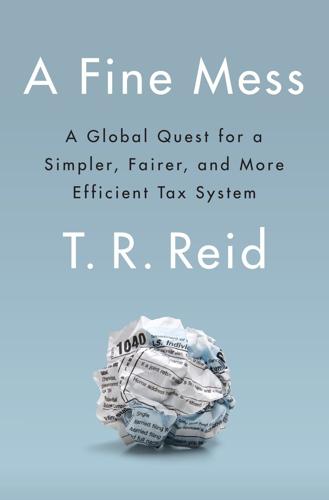
A Fine Mess
by
T. R. Reid
Published 13 Mar 2017
Like other deductions, it is a particular boon to those in the upper brackets; about three-quarters of all the deductions for home mortgage interest go to taxpayers making more than $100,000 per year. About half of American homeowners take the standard deduction, which means they get no tax break for paying their mortgage. While this deduction is promoted by realtors and mortgage bankers as a boon to home buyers, it is just as likely to make a home purchase more difficult. All studies (except those funded by the real estate industry) find that a mortgage interest deduction raises the price of a house. When the OECD investigated the impact of the mortgage interest deduction in wealthy countries where it is still in place, it concluded that “new purchasers . . . are not necessarily the beneficiaries of these tax provisions,” because the interest deduction forces them to pay an increased price.
…
But Australia, Canada, Germany, Great Britain, Israel, Japan, the Netherlands, and New Zealand, for example, have no deduction for mortgage interest at all. Yet eliminating the deduction seems to have no impact on home ownership. In all the industrialized democracies, the rate of home ownership is just about the same. Roughly 65% of families own their home in countries that have the mortgage interest deduction, and about 65% of families own their home in countries that do not. Just like the charitable deduction, though, the write-off for mortgage interest is hard to get rid of. It has been part of the tax code for so long (more than a hundred years) that people see it as a basic right.
…
A., 44–45 health care, 17, 37–38, 44, 51, 63, 69, 114, 118, 157, 176–80, 186, 221 health insurance, 29, 36, 52–53, 63, 81, 126, 133, 209, 218, 246–47, 251 hedge funds, 137–38, 183 Helvering v. Gregory, 159–61 Hines, James R., 56–57 Hollande, François, 127, 133–34, 142, 151 Holmes, Oliver Wendell, Jr., 30, 32, 36 home ownership, 8–9, 36, 40, 52, 75–81, 87–91, 116, 122. See also mortgage interest deduction; property: taxes Hoover Institution, 96–97 Hungary, 15, 18–19, 41, 111, 239 Iceland, 15, 129, 200 Illinois, 141–44, 157, 163 immigrants, 155, 192, 194–95, 229 imports, 34, 50, 65, 187, 189, 193 income definition of, 17–18, 52, 222, 255 distribution of, 44–46, 57 foreign-earned, 22–23, 81, 143–58, 161–64 inequality of, 43–46, 115–25, 135, 139 “ordinary,” 137, 160 seven brackets of, 97 “stateless,” 150, 154 income tax earned income tax credit, 217 elimination of, 225 history of, 1–3, 12, 34–35, 45–46, 121, 135, 145, 173, 250 nonpayers of, 233–34 rebates of, 41–42 See also specific types Income Tax, The: A Study of the History, Theory, and Practice of Income Taxation at Home and Abroad (Seligman), 45 India, 34, 129 inequality, economic, 8, 43–46, 98, 107, 115–25, 127, 135, 139, 172–75, 242, 253–56 inflation, 32–33 inheritance tax, 17, 30, 99, 121, 129–33, 254 insurance, 31–32, 60–61, 181–82.

The People vs. Democracy: Why Our Freedom Is in Danger and How to Save It
by
Yascha Mounk
Published 15 Feb 2018
The process of obtaining permits should be made much easier, and disputes about them resolved much more quickly.39 Towns and villages should have less power to veto developments in their jurisdiction.40 States should do more to help in the construction of new apartments, whether directly through the addition of new units of public housing or indirectly through financial assistance to local municipalities.41 Finally, the introduction of land value taxes—which levy the same charge on a patch of land irrespective of whether its owner lets it lie barren or decides to erect a building on it—would provide a strong incentive to build new homes.42 A different tax system could also improve the distribution of housing. Higher rates on second homes and vacant properties could drive up occupancy rates.43 Existing incentives for rich people to buy bigger homes or purchase additional properties—like the mortgage-interest tax deduction in the United States or the easy availability of buy-to-let mortgages in the United Kingdom—could be abolished.44 None of these policies will be easy to pass: Since the equity they own in their homes is a primary source of wealth for many middle-class people, they have a strong incentive to vote for higher home prices.45 And since a precipitous drop in housing prices can, as the world painfully learned in 2008, lead to a huge short-term shock, politicians are understandably worried about any policy that might pop a speculative bubble.46 But if we take housing seriously as an artificial restraint on our affluence—and thus a danger to our democracies—there are ways to compensate the losers of falling home prices, and to make potential gains more salient to the winners.
…
For an example of an empty tax penalty, see “Council Tax: Changes Affecting Second Homes and Empty Properties,” Gov.uk: Borough of Poole, http://www.poole.gov.uk/benefits-and-council-tax/council-tax/council-tax-changes-affecting-second-homes-and-empty-properties/, accessed September 14, 2017. 44. The benefits of the home mortgage interest deduction—introduced in its current form in 1986—are ten times greater for a household earning more than $250,000 than for a household earning between $40,000 and $75,000. See James Poterba and Todd Sinai, “Tax Expenditures for Owner-Occupied Housing: Deductions for Property Taxes and Mortgage Interest and the Exclusion of Imputed Rental Income,” paper given at the American Economic Association Annual Meeting, New Orleans, LA, January 5, 2008, http://real.wharton.upenn.edu/~sinai/papers/Poterba-Sinai-2008-ASSA-final.pdf, accessed September 14, 2017. 45.

13 Bankers: The Wall Street Takeover and the Next Financial Meltdown
by
Simon Johnson
and
James Kwak
Published 29 Mar 2010
Quoted in Eric Lipton and Raymond Hernandez, “A Champion of Wall Street Reaps Benefits,” The New York Times, December 13, 2008, available at http://www.nytimes.com/2008/12/14/business/14schumer.html. 58. U.S. Census Bureau, Housing Vacancies and Homeownership, Table 14, available at http://www.census.gov/hhes/www/housing/hvs/historic/index.html. 59. Edward L. Glaeser and Jesse M. Shapiro, “The Benefits of the Home Mortgage Interest Deduction,” Tax Policy and the Economy 17 (2003): 37–82, available at http://www.jstor.org/stable/20140504. 60. Edward L. Glaeser, “Attack of the Home Buyers’ Tax Credit,” Economix Blog, The New York Times, November 10, 2009, available at http://economix.blogs.nytimes.com/2009/11/10/attack-of-the-home-buyers-tax-credit/.
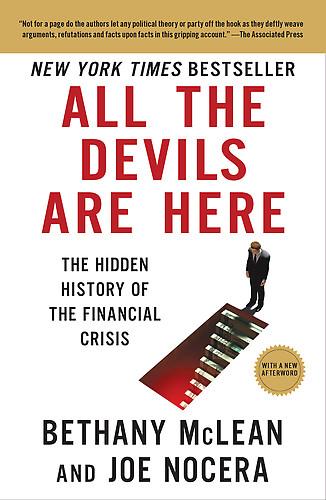
All the Devils Are Here
by
Bethany McLean
Published 19 Oct 2010
It suggests upward mobility, opportunity, a stake in something that matters. Historically, owning a home hasn’t just been about taking possession of an appreciating asset, or even having a roof over one’s head. It has also been a statement about values. Not surprisingly, government policy has long encouraged homeownership. The home mortgage interest deduction is a classic example. So is the thirty-year fixed mortgage, which is standard in only one other country (Denmark) and is designed to allow middle-class families to afford monthly mortgage payments. For decades, federal law gave the S&L industry a small interest rate advantage over the banking industry—the housing differential, this advantage was called.

925 Ideas to Help You Save Money, Get Out of Debt and Retire a Millionaire So You Can Leave Your Mark on the World
by
Devin D. Thorpe
Published 25 Nov 2012

Happy City: Transforming Our Lives Through Urban Design
by
Charles Montgomery
Published 12 Nov 2013
Then there is the U.S. government’s accelerated depreciation tax deduction, which gives developers a generous tax break for creating new buildings rather than renovating or reusing old ones. It effectively rewards Walmart for abandoning older stores and building in regional power centers far from the communities they first promised to serve. Another misguided gift to sprawl is the home mortgage interest tax deduction. The United States is one of only a handful of countries in the world that gives individuals a tax break on interest for home mortgages. In practice, the deduction has given the biggest tax break to people who can afford to buy new homes on the suburban fringe rather than those who buy cheaper, modest homes in older neighborhoods.

Underwater: How Our American Dream of Homeownership Became a Nightmare
by
Ryan Dezember
Published 13 Jul 2020
See also home prices asking collapse in ranges in stock prison time private-equity investments Progress Residential promotional borrowing rates property investors property taxes property value public beach access Public Storage purchase contracts purchase price, of Vision Bank Quonset huts Racketeer Influenced and Corrupt Organizations Act Raley, Scott Ranieri, Lewis real estate agents home prices influencing house hunt with oil spill influencing Shallow, B., as top-selling real estate crash real estate property Alabama’s Gulf Coast Blackstone Group investing in commissions on investment business in Orange Beach investments in prices rising of selling of Shallow, B., selling speculation in waterfront Realty, Joan T. redevelopment pact redlining refinance loans refinancing Regions bank Register English editor of full-page ad in layoffs at as reporter for regulatory response RE/MAX franchise rental properties from foreclosures home prices and increases in Kay’s software scanning of McNeilage mortgage-interest tax deduction and mortgages compared to rental-home business rent-backed bonds rentership society “A Rentership Society” (report) renting costs of homeownership compared to mortgages changing to in Spring Hill upmarket for well-to-do repossessed houses residential construction retirement retirement homes rezoning request Ricardo, David RICO Act Riley, Bob Riverbrooke Capital Partners road construction Romem, Issi Roosevelt, Franklin D.
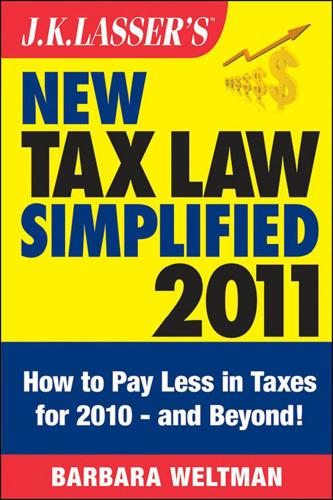
J.K. Lasser's New Tax Law Simplified: Tax Relief From the HIRE Act, Health Care Reform, and More
by
Barbara Weltman
Published 30 Nov 2010
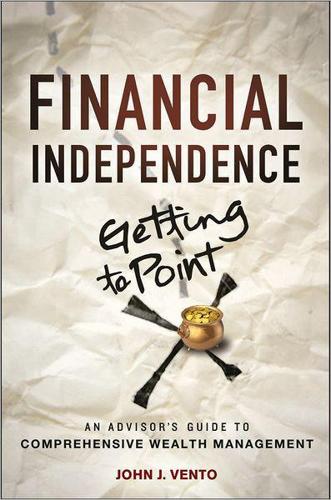
Financial Independence
by
John J. Vento
Published 31 Mar 2013
Still, a house can increase in value if you hang on to it for many years and maintain it well. It can also help you financially in other ways. Why a Mortgage Is Still Good Debt The reason a home mortgage is usually considered good debt is that from the moment you buy the house, it offers certain financial reliefs and leverage. For starters, your home mortgage interest may be tax deductible. (The federal government allows you to deduct mortgage interest expenses to the extent your mortgage does not exceed $1 million. Therefore, if you are in the 40 percent tax bracket and you are paying 6 percent interest on your mortgage, your after-tax cost for financing may actually be only 3.6 percent, which is 6 percent less the 40 percent tax savings).

Misbehaving: The Making of Behavioral Economics
by
Richard H. Thaler
Published 10 May 2015
In fact, in my parents’ generation, families strived to pay off their mortgages as quickly as possible, and as late as the early 1980s, people over sixty had little or no mortgage debt. In time this attitude began to shift in the United States, partly as an unintended side effect of a Reagan-era tax reform. Before this change, all interest paid, including the interest on automobile loans and credit cards, was tax deductible; after 1986 only home mortgage interest qualified for a deduction. This created an economic incentive for banks to create home equity lines of credit that households could use to borrow money in a tax-deductible way. And certainly it made sense to use a home equity loan to finance the purchase of a car rather than a car loan, because the interest was often lower as well as being tax deductible.

The Rent Is Too Damn High: What to Do About It, and Why It Matters More Than You Think
by
Matthew Yglesias
Published 6 Mar 2012

Makers and Takers: The Rise of Finance and the Fall of American Business
by
Rana Foroohar
Published 16 May 2016
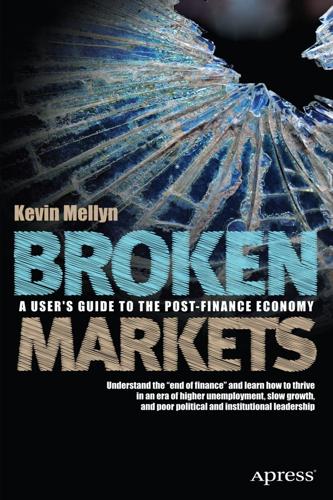
Broken Markets: A User's Guide to the Post-Finance Economy
by
Kevin Mellyn
Published 18 Jun 2012

Your Money: The Missing Manual
by
J.D. Roth
Published 18 Mar 2010

Financial Fiasco: How America's Infatuation With Homeownership and Easy Money Created the Economic Crisis
by
Johan Norberg
Published 14 Sep 2009
For this reason, ever since the United States introduced an income tax its government has been helping out its citizens by allowing them to deduct mortgageinterest payments from that tax-similarly to some other countries, including Sweden. This support for homeownership was reinforced by President Ronald Reagan and Congress in 1986, when the tax deduction for home mortgage interest was retained, while tax incentives favoring rental development and ownership were removed. In addition, the deduction for other consumer loans, such as car and credit card loans, was abolished, which had the effect of steering more and more lending toward the housing market. In 1994, 68 percent of home loans were in fact used to pay down debts for other consumption, for example, car purchases.'

Aftershock: The Next Economy and America's Future
by
Robert B. Reich
Published 21 Sep 2010
In requiring Americans to share the costs of adversity, it enabled them to share the benefits of peace of mind. Peace of mind and security freed them to consume more of the fruits of their labors. The government sponsored the dreams of American families to own their own home by providing low-cost mortgages and interest deductions on mortgage payments. In many sections of the country, government subsidized electricity and water to make such homes affordable. And it built the roads and freeways that connected the homes with major commercial centers. The interstate highway system—forty-one thousand miles of straight four-lane (sometimes even six-lane) freeways to replace the old two-lane federal roads that meandered through cities and towns—became the single most ambitious public works program in American history.
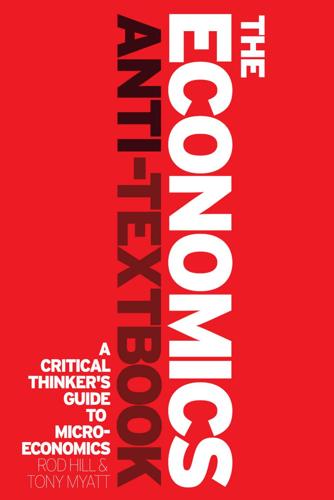
The Economics Anti-Textbook: A Critical Thinker's Guide to Microeconomics
by
Rod Hill
and
Anthony Myatt
Published 15 Mar 2010
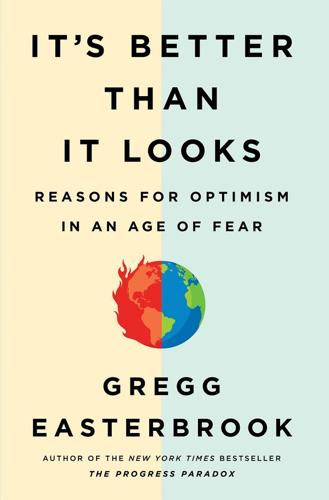
It's Better Than It Looks: Reasons for Optimism in an Age of Fear
by
Gregg Easterbrook
Published 20 Feb 2018
Returning the federal minimum to its 1970 value would produce about $19,000 a year, after payroll taxes, for a forty-hour week. Inequality would decline; legitimate employment would become more appealing compared to crime; justice would increase. Inequality could be reduced further by altering public policies that favor owning a home, apartment, or condo over renting: the mortgage interest deduction and federal backing of mortgage loans. When the mortgage interest deduction began about a century ago, the goal was to encourage average people to own property, then viewed as a moon-shot idea. For several generations, the interest deduction aspect of the federal tax code helped all average people build net worth, since renters who borrowed to pay the rent could deduct their debt costs.
…
The social goal of encouraging average people to own property remained valid, as in generations past, but since 1986, federal policy has concentrated net worth toward homeowners and away from renters, while driving up home prices in a manner that hinders aspiring first-time buyers; federal policy now also tends to cause urban rents to rise, preventing many men and women from living in the cities, where the best jobs are. Perhaps, then, it should be no surprise that since 1986 inequality has increased. The more expensive the home, the greater the value of the mortgage interest deduction and the greater the advantage to the ownership class, even when federal housing assistance to the poor is taken into consideration. By 2017, the typical homeowner had about thirty times the net worth of the typical renter. Some of this difference is explained by homeownership pushing couples toward long-term relationships, legitimate employment, and fiscally sensible living—all valid policy goals.
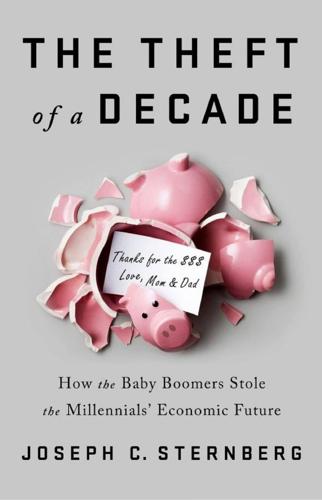
The Theft of a Decade: How the Baby Boomers Stole the Millennials' Economic Future
by
Joseph C. Sternberg
Published 13 May 2019
We already transfer significant resources from the working young to the retiring old in the form of government-run social benefits such as Social Security and Medicare. Housing used to countervail that trend by providing middle-class working households an opportunity to build their own nest eggs by accumulating home equity—and with tax advantages such as the mortgage-interest deduction that offset at least a small part of the tax payments that fund programs for the elderly. Yet even now that buffer is being removed for younger buyers, who own less of the homes they buy as house prices skyrocket and down payments can’t keep up. For Millennials, both our tax payments and our mortgage payments are providing subsidies for older generations.

EuroTragedy: A Drama in Nine Acts
by
Ashoka Mody
Published 7 May 2018
And conversion of agricultural land to allow residential and commercial property construction was creating the potential for huge financial gains. County councilors, who held the authority to rezone land, leveraged that authority for financial gain and political power. The government was priming the pump with incentives such as grants for first- time home buyers, mortgage- interest deduction, and tax breaks 178 e u r o t r a g e d y on urban-renewal schemes and capital gains.93 In 1996, the IMF had noted the disturbingly rapid increase in property prices and had warned against policy measures to stimulate construction.94 However, an insidious nexus of relationships was forming among politicians, property developers, and banks.
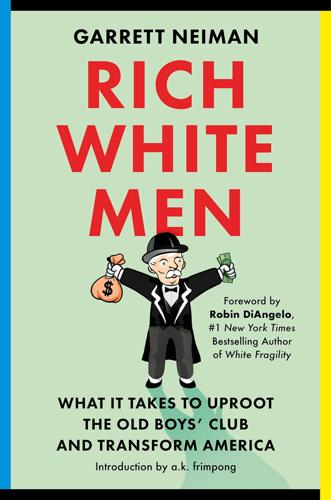
Rich White Men: What It Takes to Uproot the Old Boys' Club and Transform America
by
Garrett Neiman
Published 19 Jun 2023
Emmie Martin, “Here’s How Many Millennials Got Money from Their Parents to Buy Their Homes,” CNBC, March 12, 2019, https://www.cnbc.com/2019/03/11/how-many-millennials-got-money-to-buy-homes-from-their-parents.html. 34. Anya Martin, “How Parents Can Help with Jumbo Mortgages,” Wall Street Journal, November 12, 2015, https://www.wsj.com/articles/how-parents-can-help-with-a-home-loan-1447342246. 35. “Mortgage Interest Deduction Is Ripe for Reform,” Center on Budget and Policy Priorities, June 25, 2013, https://www.cbpp.org/research/mortgage-interest-deduction-is-ripe-for-reform. 36. Ezra Levin, Jeremie Greer, and Ida Rademacher, From Upside Down to Right-Side Up: Redeploying $540 Billion in Federal Spending to Help All Families Save, Invest, and Build Wealth, Corporation for Enterprise Development, 2014, 26, https://prosperitynow.org/files/resources/Upside_Down_to_Right-Side_Up_2014.pdf. 37.
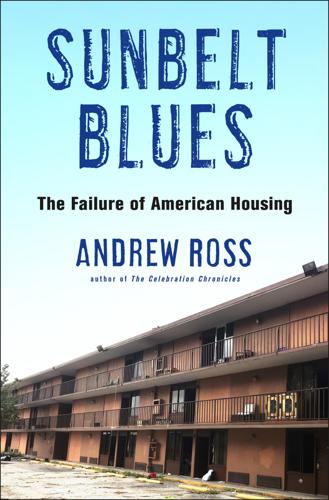
Sunbelt Blues: The Failure of American Housing
by
Andrew Ross
Published 25 Oct 2021
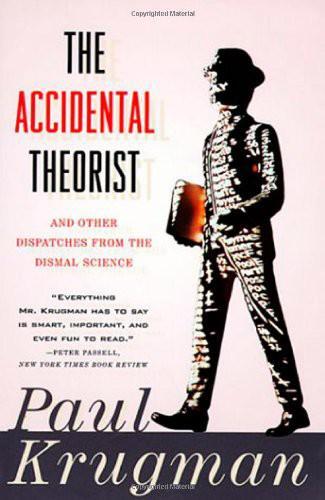
The Accidental Theorist: And Other Dispatches From the Dismal Science
by
Paul Krugman
Published 18 Feb 2010
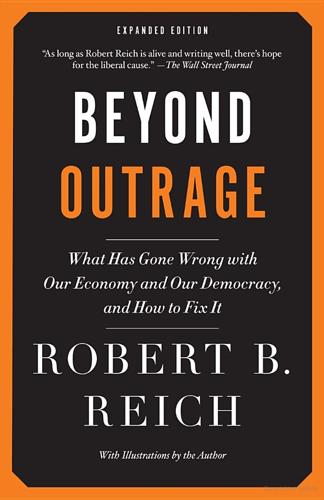
Beyond Outrage: Expanded Edition: What Has Gone Wrong With Our Economy and Our Democracy, and How to Fix It
by
Robert B. Reich
Published 3 Sep 2012
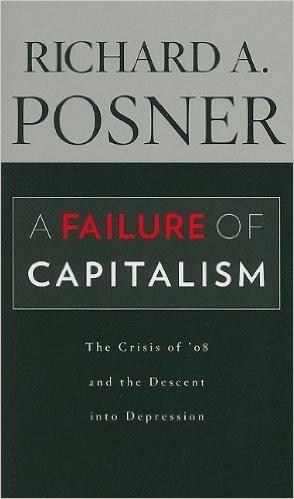
A Failure of Capitalism: The Crisis of '08 and the Descent Into Depression
by
Richard A. Posner
Published 30 Apr 2009
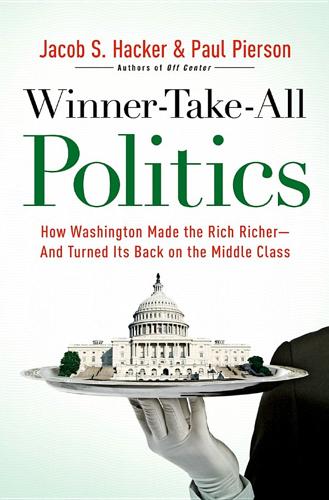
Winner-Take-All Politics: How Washington Made the Rich Richer-And Turned Its Back on the Middle Class
by
Paul Pierson
and
Jacob S. Hacker
Published 14 Sep 2010

WTF?: What's the Future and Why It's Up to Us
by
Tim O'Reilly
Published 9 Oct 2017
Meanwhile, government policies designed for an era when home ownership was a pathway into the middle class now exacerbate the problem. The tax deductibility of mortgage interest, allowed even on second homes, drives prices up even further, giving rich housing subsidies to those with the means to buy them and making homes even more expensive. A limit on the amount of mortgage interest deductibility would be corrective, but is blocked by the wealthy interests who benefit from it. The negative impact on the real economy doesn’t end there. Investors focus on companies that will have huge “exits”—that will return at least 10x their investment. This quest for outsize winners has the perverse effect of starving ordinary businesses of capital.

The Age of Entitlement: America Since the Sixties
by
Christopher Caldwell
Published 21 Jan 2020

Social Democratic America
by
Lane Kenworthy
Published 3 Jan 2014
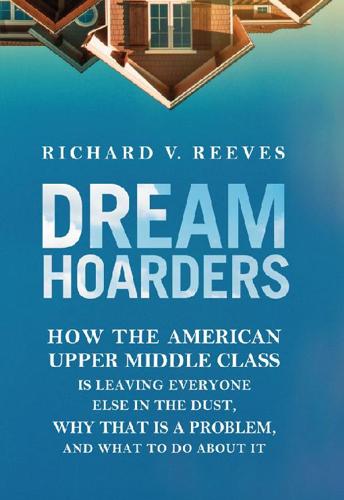
Dream Hoarders: How the American Upper Middle Class Is Leaving Everyone Else in the Dust, Why That Is a Problem, and What to Do About It
by
Richard V. Reeves
Published 22 May 2017

A Random Walk Down Wall Street: The Time-Tested Strategy for Successful Investing
by
Burton G. Malkiel
Published 10 Jan 2011
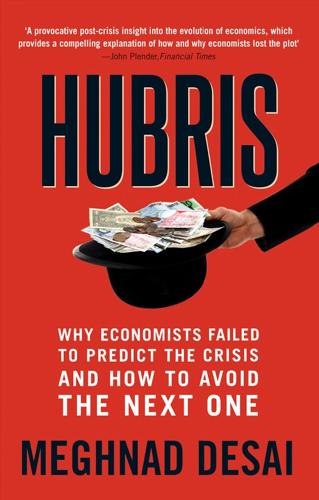
Hubris: Why Economists Failed to Predict the Crisis and How to Avoid the Next One
by
Meghnad Desai
Published 15 Feb 2015

Financial Freedom: A Proven Path to All the Money You Will Ever Need
by
Grant Sabatier
Published 5 Feb 2019
Even though I could easily pay off my home, I have a fifteen-year mortgage on it at 2.625 percent interest, and I am going to keep that mortgage because I’d rather invest that money at 7 percent plus returns than use it to pay off my mortgage. Investing in stocks gives me a higher return; I’m also able to take advantage of the tax advantages of home ownership, like the mortgage interest and tax deductions. If the interest rate on your debt is higher than any return you could realistically get on an investment, then you should pay down that debt before you invest, because that debt is compounding faster than any money you invest would grow. Compounding works both ways, so always make the decision that benefits you most based on the numbers.
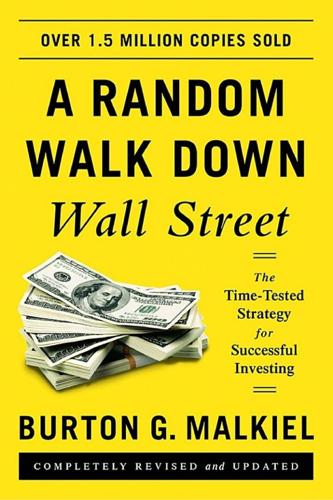
A Random Walk Down Wall Street: The Time-Tested Strategy for Successful Investing (Eleventh Edition)
by
Burton G. Malkiel
Published 5 Jan 2015

Debtor Nation: The History of America in Red Ink (Politics and Society in Modern America)
by
Louis Hyman
Published 3 Jan 2011
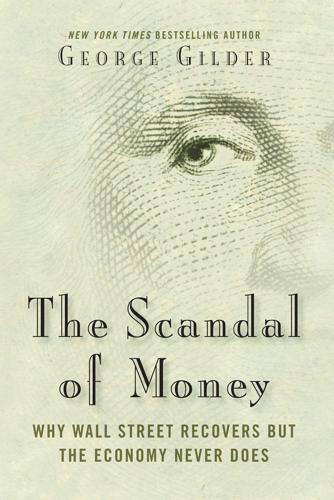
The Scandal of Money
by
George Gilder
Published 23 Feb 2016
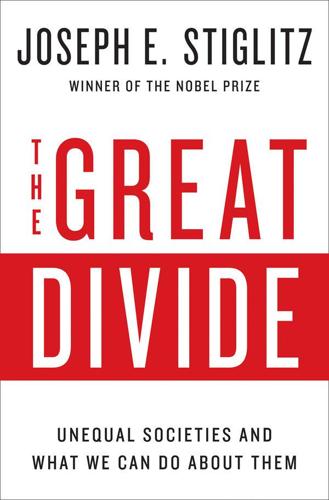
The Great Divide: Unequal Societies and What We Can Do About Them
by
Joseph E. Stiglitz
Published 15 Mar 2015
The original Paulson plan is like a massive blood transfusion to a patient with severe internal hemorrhaging. We won’t save the patient if we don’t do something about the foreclosures. Even after congressional revisions, too little is being done. We need to help people stay in their homes, by converting the mortgage-interest and property-tax deductions into cashable tax credits; by reforming bankruptcy laws to allow expedited restructuring, which would bring down the value of the mortgage when the price of the house is below that of the mortgage; and even government lending, taking advantage of the government’s lower cost of funds and passing the savings on to poor and middle-income homeowners. 3.

A Generation of Sociopaths: How the Baby Boomers Betrayed America
by
Bruce Cannon Gibney
Published 7 Mar 2017
After 1997, when almost all the Boomers who wanted to purchase housing had already done so (the youngest were by then thirty-three and the oldest, fifty-seven), home prices rose dramatically. It’s not that growth in the economy or population accelerated suddenly or permanently. The better explanation was government subsidy. The Boomer-controlled government expanded housing subsidies during the Boomers’ prime home-owning years: property tax caps, mortgage interest deductions, tax exemptions on sales, and so on all favored existing and wealthier homeowners. The government also cultivated the sentimental idea of homeownership as a national virtue. So while renting is often a better financial decision, Clinton, Bush II, and so on extolled this peculiar American dream, and consumers came to view home ownership not just as a necessity or luxury consumable, but as a surefire investment, even a kind of entitlement.

Liar's Poker
by
Michael Lewis
Published 1 Jan 1989

The Captured Economy: How the Powerful Enrich Themselves, Slow Down Growth, and Increase Inequality
by
Brink Lindsey
Published 12 Oct 2017
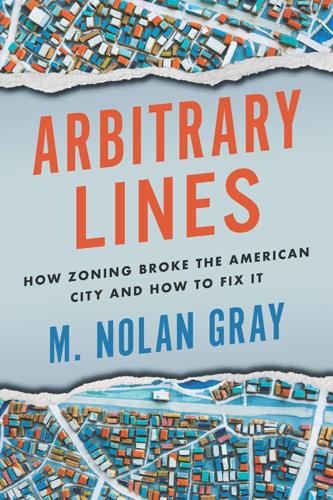
Arbitrary Lines: How Zoning Broke the American City and How to Fix It
by
M. Nolan Gray
Published 20 Jun 2022

Financial Market Meltdown: Everything You Need to Know to Understand and Survive the Global Credit Crisis
by
Kevin Mellyn
Published 30 Sep 2009
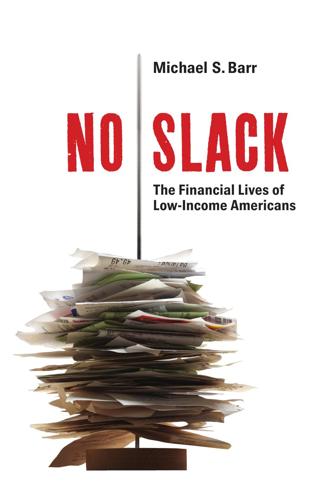
No Slack: The Financial Lives of Low-Income Americans
by
Michael S. Barr
Published 20 Mar 2012

Three Felonies a Day: How the Feds Target the Innocent
by
Harvey Silverglate
Published 6 Jun 2011

Personal Investing: The Missing Manual
by
Bonnie Biafore
,
Amy E. Buttell
and
Carol Fabbri
Published 24 May 2010
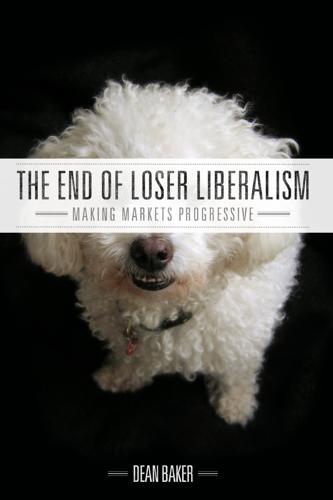
The End of Loser Liberalism: Making Markets Progressive
by
Dean Baker
Published 1 Jan 2011
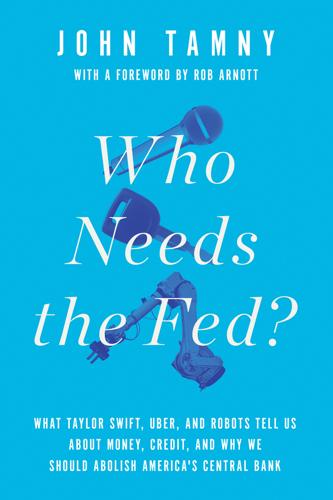
Who Needs the Fed?: What Taylor Swift, Uber, and Robots Tell Us About Money, Credit, and Why We Should Abolish America's Central Bank
by
John Tamny
Published 30 Apr 2016

Golden Gates: Fighting for Housing in America
by
Conor Dougherty
Published 18 Feb 2020

Political Order and Political Decay: From the Industrial Revolution to the Globalization of Democracy
by
Francis Fukuyama
Published 29 Sep 2014

5 Day Weekend: Freedom to Make Your Life and Work Rich With Purpose
by
Nik Halik
and
Garrett B. Gunderson
Published 5 Mar 2018

Tightrope: Americans Reaching for Hope
by
Nicholas D. Kristof
and
Sheryl Wudunn
Published 14 Jan 2020

The Aristocracy of Talent: How Meritocracy Made the Modern World
by
Adrian Wooldridge
Published 2 Jun 2021
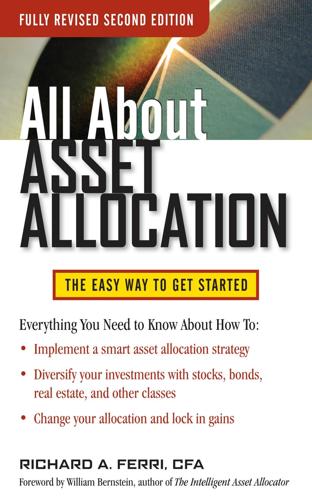
All About Asset Allocation, Second Edition
by
Richard Ferri
Published 11 Jul 2010
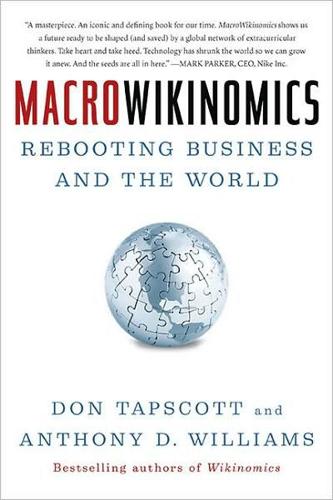
MacroWikinomics: Rebooting Business and the World
by
Don Tapscott
and
Anthony D. Williams
Published 28 Sep 2010

The Ascent of Money: A Financial History of the World
by
Niall Ferguson
Published 13 Nov 2007
The only real difference between Right and Left was the readiness of the Conservatives to deregulate the private rental market, in the hope of encouraging private landlords, and the equal and opposite resolve of Labour to reimpose rent controls and stamp out ‘Rachmanism’ (exploitative behaviour by landlords), exemplified by Peter Rachman, who used intimidation to evict the sitting tenants of rent-controlled properties, replacing them with West Indian immigrants who had to pay market rents.31 As late as 1971, fewer than half of British homes were owner-occupied. In the United States, where public housing was never so important, mortgage interest payments were always tax deductible, from the inception of the federal income tax in 1913.32 As Ronald Reagan said when the rationality of this tax break was challenged, mortgage interest relief was ‘part of the American dream’.ao It played a much smaller role in Britain until 1983, when a more radically Conservative government led by Margaret Thatcher introduced Mortgage Interest Relief At Source (MIRAS) for the first £30,000 of a qualifying mortgage.

Wealth and Poverty: A New Edition for the Twenty-First Century
by
George Gilder
Published 30 Apr 1981

Billionaires' Row: Tycoons, High Rollers, and the Epic Race to Build the World's Most Exclusive Skyscrapers
by
Katherine Clarke
Published 13 Jun 2023

Tailspin: The People and Forces Behind America's Fifty-Year Fall--And Those Fighting to Reverse It
by
Steven Brill
Published 28 May 2018
See the Department of Housing and Urban Development’s “Worst Case Housing Needs” report to Congress: https://www.huduser.gov/portal/publications/Worst-Case-Housing-Needs.html. Previous years’ reports are also available at www.huduser.gov. See also the National Low Income Housing Coalition’s “Out of Reach” report (previously cited), as well as “The Gap: A Shortage of Affordable Homes,” by the same organization: http://nlihc.org/research/gap-report. housing assistance dollars: Here I compare the money spent on mortgage interest deductions to the Department of Housing and Urban Development budget for rental assistance programs: https://www.hud.gov/program_offices/cfo/budget. It should also be noted that the Center on Budget and Policy Priorities reported in March 2017 that high-income households (over $200,000) received an average of $6,076 in housing benefits, four times greater than the $1,529 received on average by the low-income households that were fortunate enough to receive any assistance at all.